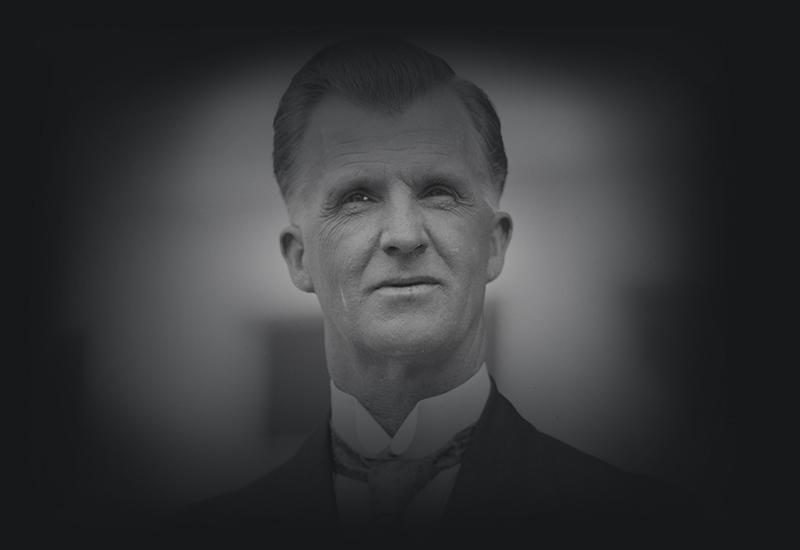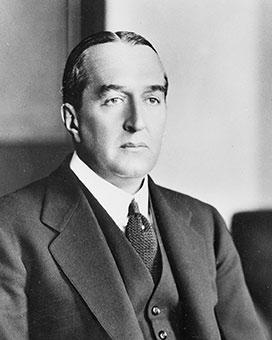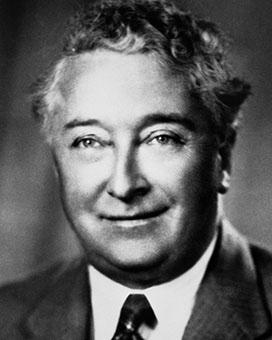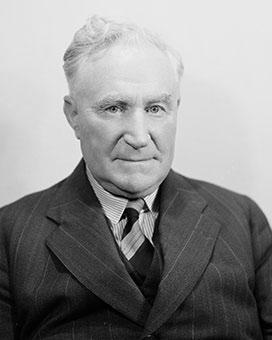James Henry Scullin contested 15 federal elections. In 1906, he unsuccessfully challenged Alfred Deakin for the Ballarat seat, then in 1910 he won Corangamite, the coastal electorate on the western side of Melbourne. He contested Corangamite unsuccessfully in 1913 and 1918. In 1922, he won the urban seat of Yarra, and held it until his retirement in 1949.
12 December 1906
James Scullin challenged the Prime Minister, Alfred Deakin, in his own electorate at this election. Deakin easily retained his seat, though Labor gains overall meant his Protectionist government depended on Labor support. For the House of Representatives, 51.48% of enrolled voters returned 16 Protectionists, 4 Independent Protectionists, 26 Labor Party candidates, 2 from the West Australian Party and 27 from an anti-socialist grouping. For the Senate half-election, 2 Protectionist, 5 Labor and 11 anti-socialist senators won the 18 seats.
13 April 1910
Scullin won the seat of Corangamite in this election, which returned a Labor government led by Andrew Fisher. With voter turnout increased to 62.80%, Deakin’s Liberal Party returned 31 members and Labor 43 members to the House of Representatives, with 1 Independent. All 18 Senate seats were won by Labor.
31 May 1913
After 3 years in parliament, Scullin lost the Corangamite seat at this election, which returned 37 Labor and 38 Liberal members to the House of Representatives, and 11 Liberals and 8 Labor candidates to the Senate. With the retirement of Alfred Deakin from parliament, Joseph Cook became Prime Minister.
14 December 1918
Scullin again unsuccessfully contested Corangamite in this by-election, which returned the Farmers Union candidate.
18 February 1922
In this by-election Scullin won the seat of Yarra, vacant as a result of the death of Frank Tudor on 10 January 1922.
16 December 1922
Scullin retained Yarra in the House of Representatives election, which increased Labor seats to 29 and Country Party seats to 14, with 5 Liberal Party (South Australia and Victoria) and 1 Independent. Nationalist Party seats were reduced to 26. After negotiations with Country Party leader Earle Page, Stanley Bruce replaced William Hughes as Prime Minister and formed a coalition government with Page. In the Senate, the Nationalist Party won 8 seats and the Labor Party 11. Just under 60% of eligible electors cast a vote in these elections.
14 November 1925
Scullin again retained Yarra, with 23 Labor, 14 Country Party, 37 Nationalist members and 1 Independent returned in the House of Representatives, and 18 Nationalist and 4 Country Party candidates returned in the Senate. The first federal election where voting was compulsory, over 90% of those eligible voted.
17 November 1928
Scullin retained Yarra among the 31 seats won by Labor, with the Country Party holding 13, and the Nationalists 29 seats, with 1 ‘Country Progressive’ Party and 1 Independent in the House of Representatives. In the Senate, Labor won 7 seats, the Nationalist Party 10 and the Country Party 2.
12 October 1929
A Labor government led by James Scullin was returned in this ‘landslide’ election, with 46 seats won by Labor, to 14 Nationalist and 10 Country Party seats, 3 ‘Independent Nationalists’ and 1 Independent in the House of Representatives election.
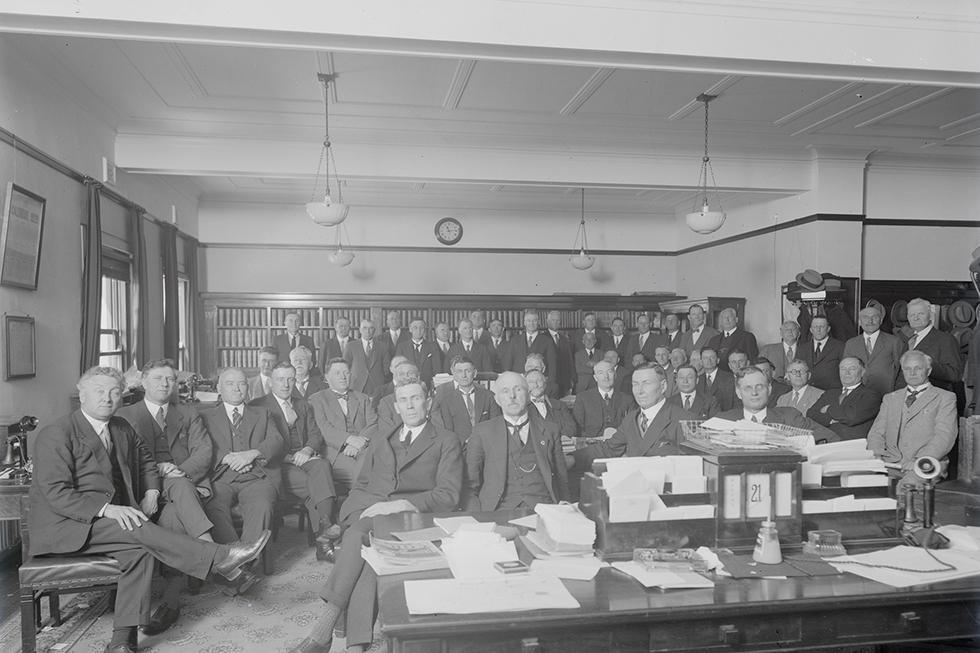
On 22 October 1929, the Caucus of 53 Labor parliamentarians met at Parliament House, Canberra, before the new Cabinet was sworn in later that day. NAA: A3560, 6120
19 December 1931
The Labor Party split meant Labor held 14 seats and the ‘Lang’ Labor group 4. The new United Australia Party led by Joseph Lyons after his defection from the Labor Party won 34 seats, and the Country Party 16, with 6 ‘Emergency Committee’ (South Australia) and 1 Independent. In the Senate, the United Australia Party won 15 seats and Labor 3. Scullin retained Yarra, but lost government. This was the first federal election contested by the Communist Party.
15 September 1934
Scullin, opposed at this election by United Australia Party candidate Harold Holt, again retained his seat of Yarra. In his last federal election as leader, Labor won 18 seats, ‘Lang’ Labor 9, the Country Party 14 and the United Australia Party 28, with 5 seats won by South Australia’s ‘Liberal and Country League’. In the 1934 Senate election, the United Australia Party won 16 seats and the Country Party 2.
23 October 1937
The Labor Party led by John Curtin won 29 seats, with Scullin retaining Yarra. The Lyons government was returned with 28 seats and 1 ‘Independent UAP’, and the Country Party won 16 seats in the House of Representatives. However, Labor gained 16 Senate seats, with the United Australia Party winning only 3.
21 September 1940
A Labor government led by John Curtin was returned with 32 seats in the House of Representatives, to 23 United Australia Party seats, 14 Country Party, 4 ‘non-Communist Labor’ members and 1 Independent. The United Australia Party and Country Party won 16 Senate seats, and Labor won 3. Scullin held his seat of Yarra.
21 August 1943
Scullin held Yarra comfortably when the Curtin Labor government increased its majority, winning 49 seats to 12 United Australia Party, 7 Country Party, 3 Country National Party (Queensland), 1 Queensland Country Party, 1 Liberal Country Party (Victoria) and 1 Independent in the House of Representatives. Labor won all 19 Senate seats contested.
28 September 1946
At Scullin’s last federal election before his retirement from parliament in 1949, he retained Yarra with the Labor government of Ben Chifley winning 43 seats to 11 Country Party seats and 15 won by Robert Menzies’ new Liberal Party, with 2 Liberal and Country League, 1 Liberal Country Party and 1 Lang Labor. In the Senate, Labor won 16 seats to 3 won by the Liberal and Country Party alliance.
Sources
These brief election results relate only to this Prime Minister. They are drawn from the online sources below, where further information can be found.
Australian Electoral Commission: Election results
University of Western Australia: Australian Government and Politics Database

